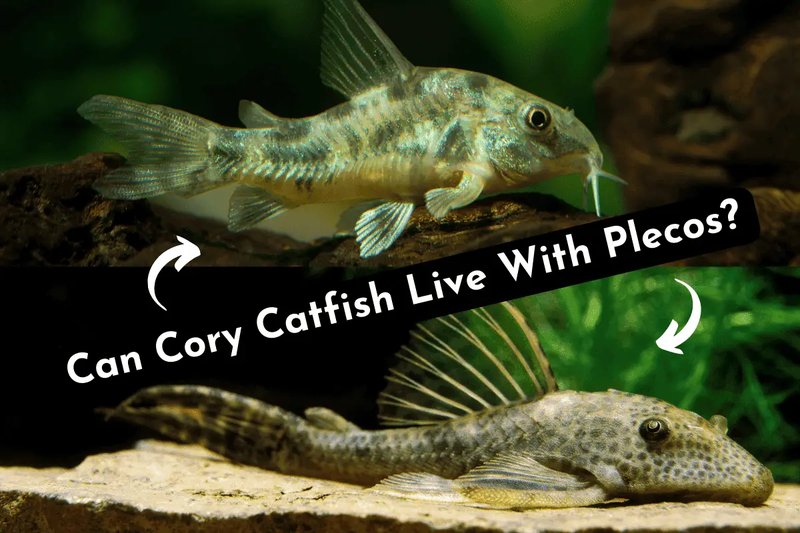
In this guide, we’ll dive into the world of Corydoras catfish and explore their compatibility with other fish species. We’ll look at their temperament, tank requirements, and which fish make the best companions or terrible roommates. So, grab your favorite beverage, settle in, and let’s make sure your fishy friends all get along swimmingly!
Understanding Corydoras Catfish
Corydoras catfish, often referred to as “Corys,” are small, peaceful fish that come from freshwater rivers in South America. They’re known for their distinctive armor-like scales and playful behavior. You might notice how they like to swim in groups, often dashing around the bottom of the tank in search of food. This social nature makes them an excellent addition to many community aquariums.
Their gentle disposition is another reason they’re popular among fish keepers. Corys are typically non-aggressive and prefer calm environments. However, they do have specific needs that must be met for them to thrive. Keeping the right water conditions and tank mates can significantly impact their happiness and health.
Key Characteristics of Corydoras Catfish
Before considering compatibility, it’s essential to understand what makes Corys unique. Here are some key traits:
- Size: Most Corydoras species grow to about 2 to 3 inches long, making them small enough to fit in various tanks.
- Behavior: They are peaceful and social, often seen schooling with their own kind.
- Diet: Corys enjoy a diet of sinking pellets, flakes, and the occasional treat of bloodworms or brine shrimp.
- Tank Conditions: They prefer soft substrate for burrowing and clean water with a pH level of 6.0 to 8.0.
These characteristics play a significant role in determining which fish can live harmoniously with them.
Ideal Tank Mates for Corydoras Catfish
When considering what fish to keep with your Corydoras catfish, think about species that share a similar temperament and environmental needs. The golden rule is to choose peaceful fish that won’t nip at Corys or outcompete them for food. Here are a few excellent choices:
- Tetras: Species like Neon Tetras and Cardinal Tetras are great companions. They swim in the upper water column, leaving Corys to forage at the bottom.
- Rasboras: Harlequin Rasboras are another peaceful option that thrives in groups and doesn’t bother Corys.
- Guppies: These colorful little fish can coexist well with Corys, as long as they’re not overly aggressive.
By choosing these tank mates, you’ll create a more balanced and harmonious aquarium. Plus, you’ll enjoy the added diversity and colors of your fish community!
Fish to Avoid with Corydoras Catfish
While many fish can cohabitate peacefully with Corydoras, some species are best left out of the equation. Here’s a list of fish that might cause trouble in the tank:
- Aggressive Fish: Species like Cichlids and some Barbs can be territorial and may bully Corys.
- Large Fish: Fish like Goldfish or large Gouramis can view Corys as snacks, so it’s crucial to keep them separated.
- Nippy Fish: Fish such as certain types of Bettas or Serpae Tetras might nip at the fins of Corys.
By avoiding these species, you can help ensure your Corydoras live a long, peaceful life in your aquarium.
Tank Size and Setup Considerations
The size of your tank and its setup greatly influences whether Corydoras can live harmoniously with other fish. A larger tank offers more swimming space and reduces stress among fish. Ideally, aim for at least a 20-gallon tank if you plan to keep multiple Corys and other fish.
Here are some key points to consider for your tank:
- Substrate: Use a soft substrate like sand or fine gravel so Corys can comfortably dig and forage without injuring themselves.
- Plants and Hiding Spots: Adding plants and decorations creates hiding spots and makes your fish feel secure. Corys enjoy rummaging around plants.
- Water Parameters: Ensure your water temperature is between 72°F to 78°F and pH remains stable to keep all your fish healthy.
Creating this environment not only benefits Corydoras but also enhances the overall well-being of your entire aquarium community.
Feeding Habits and Compatibility
Understanding the feeding habits of Corydoras catfish is crucial to ensuring they coexist peacefully with other fish. Corys are bottom-feeders and typically scavenge for food. However, they can also be competitive when it comes to feeding time. Here’s how to effectively feed them while keeping everyone satisfied:
– Feed Sinking Foods: Use sinking pellets or tablets designed for bottom feeders. This approach ensures Corys get their fair share without being outcompeted by more aggressive feeders.
– Separate Feeding Areas: If you have more aggressive fish, try feeding them at one end of the tank and your Corys at the other. This separation helps reduce competition and stress.
– Variety is Key: Incorporate a mix of foods like algae wafers, frozen or freeze-dried food, and even fresh vegetables for a balanced diet. This variety helps keep your Corys healthy and happy!
By keeping their feeding habits in mind, you’ll improve not only their health but also their compatibility with other species.
Social Structure and Schooling Behavior
Corydoras are social creatures by nature and thrive in groups. Keeping them in schools of at least six will promote their well-being and reduce stress. When they feel secure and happy in a group, they are less likely to show signs of aggression or stress, and they’ll engage in more natural behaviors.
Here’s why schooling matters:
- Reduced Stress: A group helps distribute their attention and minimizes the risk of bullying from larger or more aggressive fish.
- Natural Behavior: In a school, Corys play and swim together, mimicking their natural habitat. This interaction is essential for their mental health.
- Health Benefits: Healthy social interactions can lead to healthier fish; stressed fish are more prone to illness.
So, if you’re considering getting Corydoras, think about adding a few more to their school. You’ll see how their behavior transforms!
Final Thoughts: Creating a Happy Community Tank
In summary, Corydoras catfish can be wonderful additions to a community aquarium, as long as their tank mates are chosen wisely. Opt for peaceful species that share similar tank requirements, and create an environment where they can thrive. Remember to pay attention to their unique behaviors, feeding habits, and social needs.
By fostering the right community, you’ll not only keep your Corydoras happy but enhance the beauty and activity of your whole aquarium. If you follow these guidelines, your fishy friends can happily coexist, making your underwater world a vibrant sanctuary!

